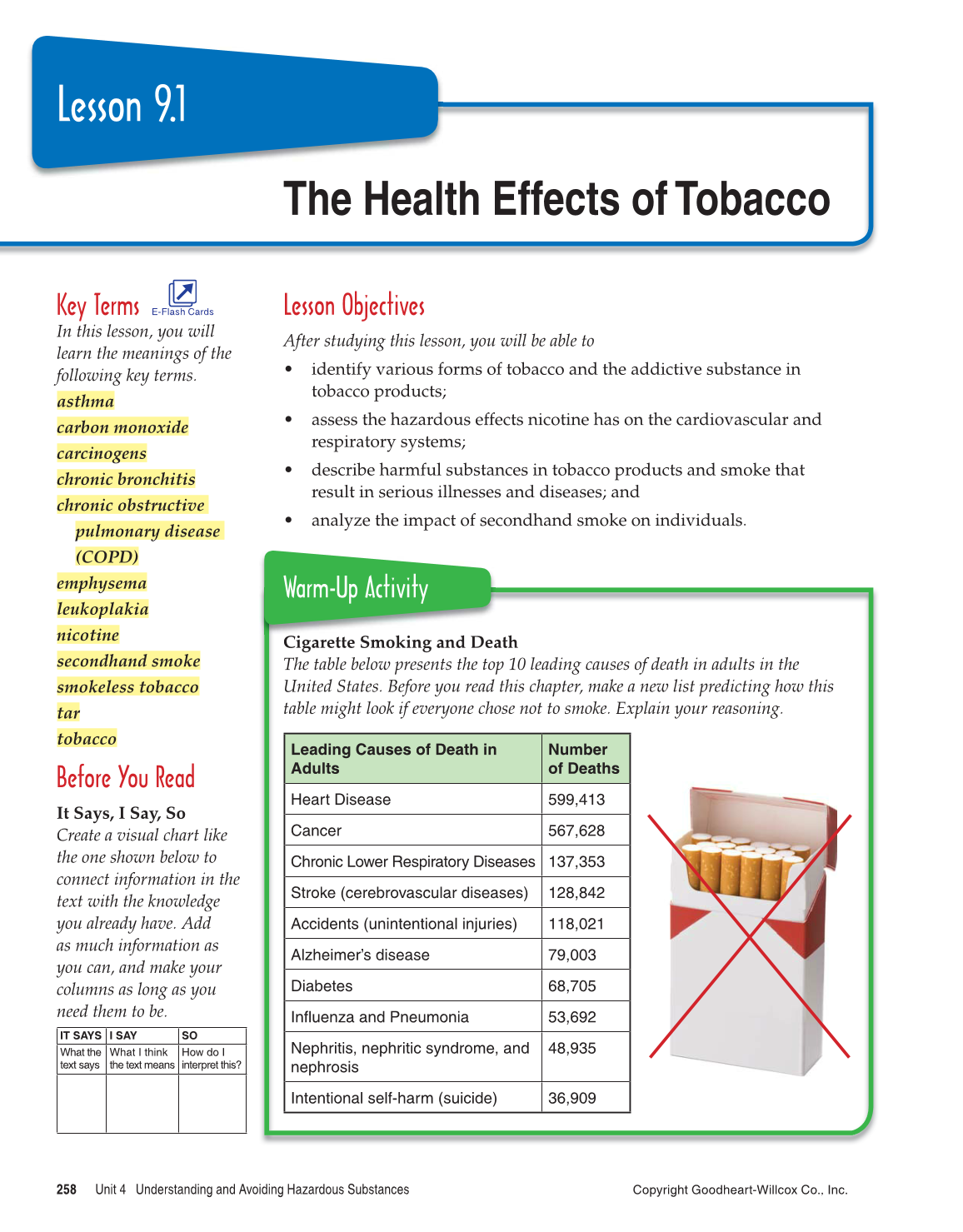258 Unit 4 Understanding and Avoiding Hazardous Substances
Copyright Goodheart-Willcox Co., Inc.
Lesson Objectives
After studying this lesson, you will be able to
• identify various forms of tobacco and the addictive substance in
tobacco products;
• assess the hazardous effects nicotine has on the cardiovascular and
respiratory systems;
• describe harmful substances in tobacco products and smoke that
result in serious illnesses and diseases; and
• analyze the impact of secondhand smoke on individuals.
Warm-Up Activity
Cigarette Smoking and Death
The table below presents the top 10 leading causes of death in adults in the
United States. Before you read this chapter, make a new list predicting how this
table might look if everyone chose not to smoke. Explain your reasoning.
Lesson 9.1
Before You Read
It Says, I Say, So
Create a visual chart like
the one shown below to
connect information in the
text with the knowledge
you already have. Add
as much information as
you can, and make your
columns as long as you
need them to be.
The Health Effects of Tobacco
Key Terms
In this lesson, you will
learn the meanings of the
following key terms.
asthma
carbon monoxide
carcinogens
chronic bronchitis
chronic obstructive
pulmonary disease
(COPD)
emphysema
leukoplakia
nicotine
secondhand smoke
smokeless tobacco
tar
tobacco
IT SAYS I SAY SO
What the
text says
What I think
the text means
How do I
interpret this?
Leading Causes of Death in
Adults
Number
of Deaths
Heart Disease 599,413
Cancer 567,628
Chronic Lower Respiratory Diseases 137,353
Stroke (cerebrovascular diseases) 128,842
Accidents (unintentional injuries) 118,021
Alzheimer’s disease 79,003
Diabetes 68,705
Infl uenza and Pneumonia 53,692
Nephritis, nephritic syndrome, and
nephrosis
48,935
Intentional self-harm (suicide) 36,909
E-Flash Cards
